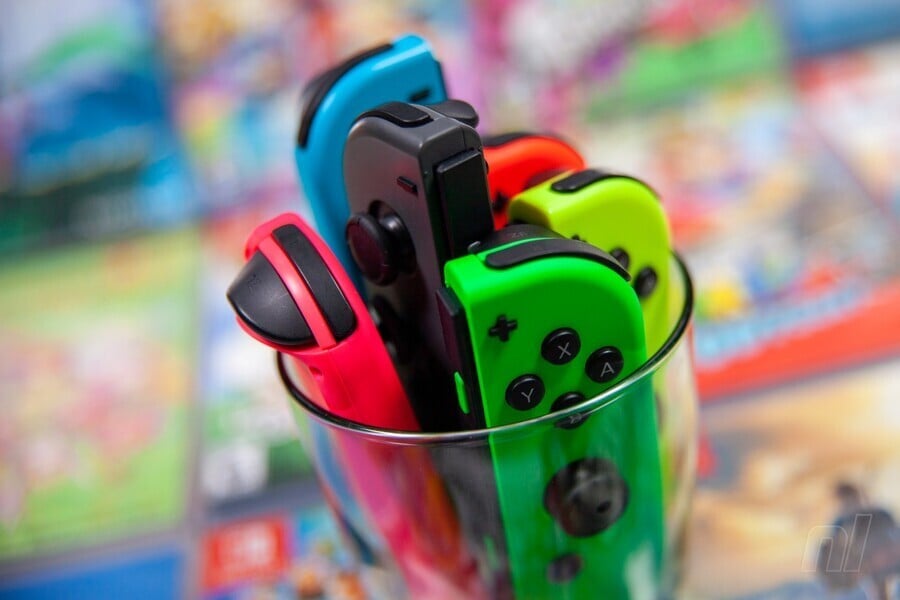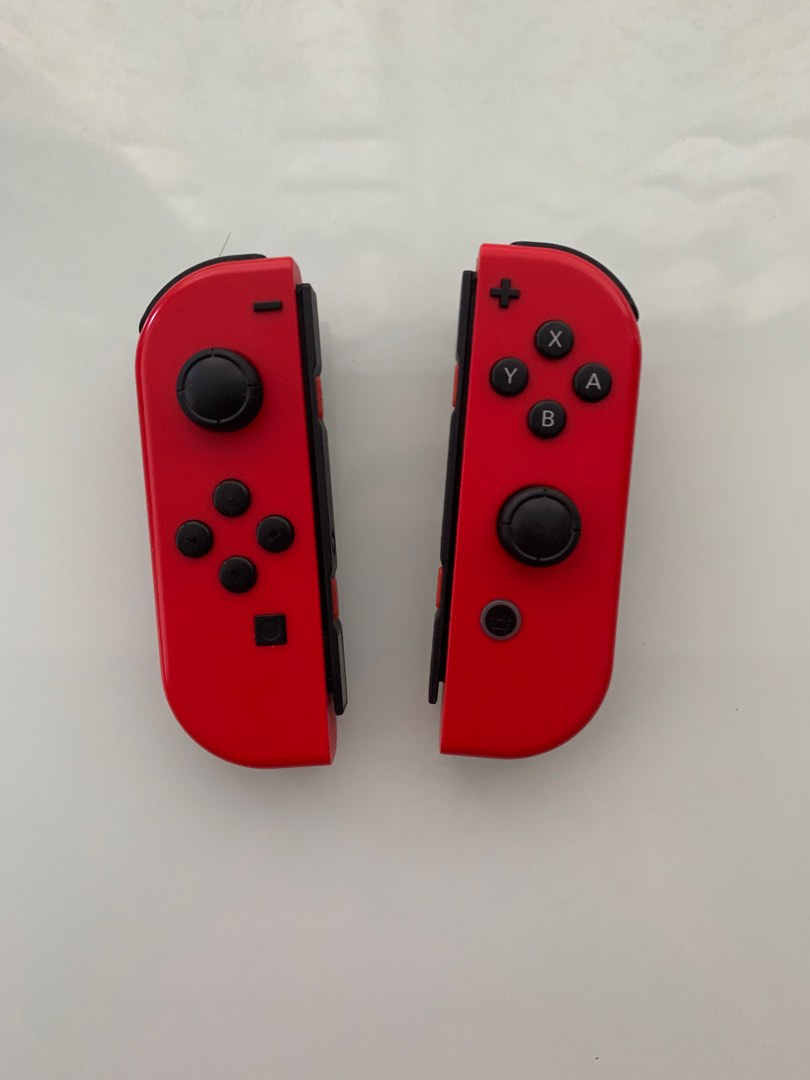The Nintendo Switch has taken gaming to a whole new level, and a significant part of that experience comes from the JoyCons. One of the standout features of these controllers is their vibration feedback, often referred to as rumble. But what does that mean for gameplay? In this section, we'll explore the basics of vibration in the JoyCons and how it enhances our gaming experience. Vibrations can give players critical information about their in-game actions, making every moment feel more engaging and immersive.
Understanding Rumble Technology

Rumble technology in the Nintendo Switch JoyCons is built on advanced haptic feedback systems, allowing players to feel a tangible connection with the gaming world. Unlike traditional rumble motors that provide a one-size-fits-all vibration, JoyCons employ *advanced HD
Here's a breakdown of what makes this rumble technology so special:
- Precision Feedback: JoyCons are capable of simulating different sensations, such as the feeling of rolling a marble or the impact of a heavy drop. This level of detail lets players experience the game in unique ways.
- Dual Motors: Each JoyCon contains its own motor, enabling independent vibration effects. This means different actions can produce distinct vibrations in either controller, creating an immersive experience.
- Adaptive Feedback: Developers can tailor the vibration feedback for different gameplay scenarios, enhancing the connection between player and game. This helps in conveying information like receiving damage, picking up items, or engaging in combat.
Games like “1-2-Switch” showcase the JoyCons' vibration capabilities brilliantly. Players can feel the difference between various in-game scenarios, making gameplay feel more intuitive. Thus, JoyCon rumble technology elevates gaming beyond visual and auditory experiences, providing an engaging, tactile dimension that truly immerses players in the action.
How JoyCons Implement Vibration Feedback

The Nintendo Switch Joy-Con controllers are not just about their sleek design and portability; they offer a rich sensory experience that includes innovative vibration feedback. So, how exactly do Joy-Cons manage to deliver this impressive feature?
At the core of the vibration feedback system is a technology known as HD Rumble. This is a more advanced form of vibration compared to traditional rumble motors. With HD
Another key aspect of how Joy-Cons implement vibration feedback is their use of small, high-precision motors*. These motors can produce varying intensities of vibration, providing a tactile response that can simulate various textures and actions. So whether you’re driving over gravel or jumping on a platform, the Joy-Cons ensure you’re right there with the action.
Developers also get to play an essential role in this process. They can customize how they want the vibration feedback to feel, utilizing the capabilities of HD Rumble to enhance gameplay. This means that different games can offer unique experiences with vibration, which keeps things fresh and engaging.
Different Types of Vibration Feedback in JoyCons
It’s not just about having vibration; it’s about how that vibration enriches your gaming experience. The Joy-Cons provide several types of vibration feedback that cater to different gaming scenarios. Let’s break them down:
- HD Rumble: This is the star of the show. In contrast to conventional rumbles, HD Rumble allows players to feel precise vibrations that replicate different sensations with remarkable detail. You could feel the difference between rolling a ball on snow versus a wooden floor!
- Standard Vibration: While not as sophisticated as HD Rumble, standard vibration is still included for compatibility with a vast range of titles, especially older ones. Think of it as the classic rumble experience that most gamers are already familiar with.
- Dynamic Vibration: Some games leverage dynamic vibration to provide context-sensitive feedback. This means vibrations change in intensity and frequency based on actions or events happening in the game, leading to a more responsive and interactive experience.
- Feedback Through Motion: Alongside traditional and HD Rumble, Joy-Cons also respond to motion. When you tilt, shake, or rotate the Joy-Con, you can feel a corresponding change in vibration, enhancing gameplay immersion even further.
In conclusion, the variety of vibration feedback provided by the Joy-Cons not only enhances gameplay but also draws players deeper into the game universe. The thoughtful implementation of these vibrations really shows how Nintendo has taken player experience into account, pushing the envelope on gaming immersion.
The Impact of Rumble on Gaming Experience
Rumble technology in gaming controllers is often underestimated, but it actually plays a crucial role in enhancing immersion and player engagement. When you play a game, it’s not just your auditory and visual senses that are in play; the tactile feedback you receive through rumble can significantly affect how you experience and enjoy the game.
Here are some ways rumble impacts gaming:
- Immersion: Rumble feedback helps create a more realistic gaming environment. For instance, when an explosion happens in a game, the simultaneous rumble in the JoyCons makes you feel like you’re right there in the action.
- Enhanced Feedback: Rumble can indicate important in-game events, such as getting hit or discovering something significant. RPGs often use subtle rumble to convey hints about treasure or enemies nearby.
- Emotional Connection: Subtle vibrations can evoke emotional responses. In a touching scene, a gentle rumble can complement the visuals and music, enhancing the emotional weight of the moment.
The Nintendo Switch JoyCons utilize advanced rumble technology, allowing for varied intensity and feedback patterns. For instance, the HD Rumble feature enables the system to replicate the sensation of different objects—like the feel of ice cubes rolling around in a glass—letting players connect even more deeply with the game.
In summary, rumble isn’t just an added feature; it’s a fundamental part of the gaming experience that can transform how a player interacts with a game. When the controller vibrates, it adds an extra layer that can elevate the excitement and engagement felt during gameplay.
Conclusion: The Importance of Vibration Feedback in JoyCons
As we wrap up our look at the Nintendo Switch JoyCons and their vibration capabilities, it becomes obvious just how integral vibration feedback is to the gaming experience. The JoyCons are not just controllers; they act as an extension of the player's emotions, reactions, and actions.
Vibration feedback can make scenarios feel more dynamic and responsive. Here’s why it’s essential:
| Aspect | Importance |
|---|---|
| Realism | It mimics real-life sensations, making virtual experiences more lifelike. |
| Game Engagement | Vibration helps keep players immersed, leading to longer and more enjoyable sessions. |
| Feedback Mechanism | It provides essential cues that help players make informed decisions during gameplay. |
Without vibration feedback, games would feel flatter and less engaging. The JoyCons excel in delivering this sensory experience, making them a vital part of the Nintendo Switch’s charm. So, the next time you pick up your Switch, take a moment to appreciate not just the graphics or storyline, but also the rumble—the unsung hero of gaming immersion!










